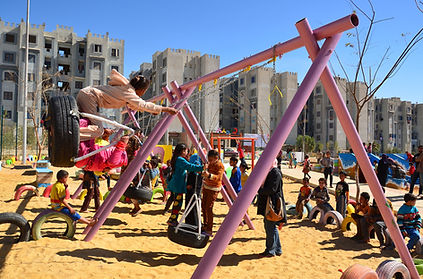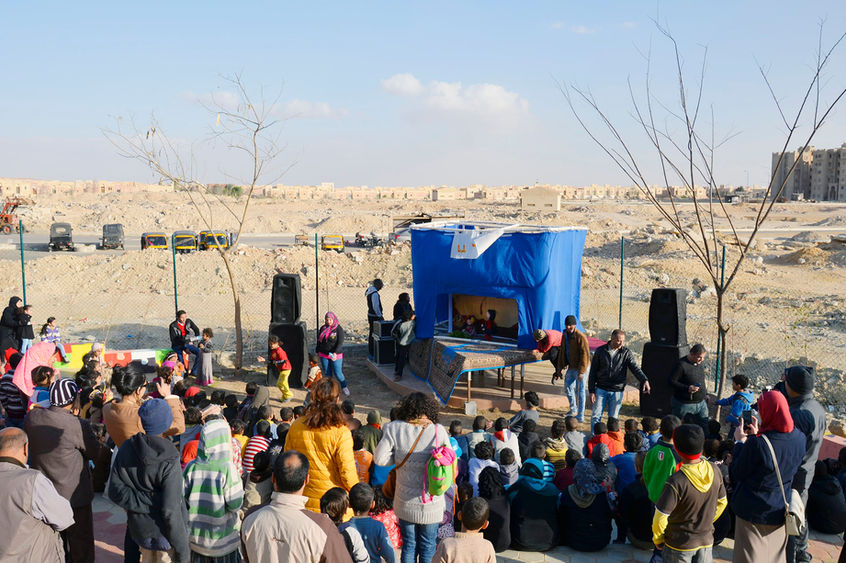Takween’s mission focuses on innovative and concrete solutions that have been researched, tested and implemented to meet the needs of communities and their specific built environments to achieve inclusive urban spaces that will thrive for generations to come. With this mission, Takween aims to improve the quality for inhabitants living in cities across Egypt and the Middle East.


Public Space to Meet and Play in 6th of October City's Masaken Al-Awla Bil Ri'aya (Masaken Othman) - Geneina
The project responds to one of the important needs identified by UNHCR in Masaken Othman; the need for safe and friendly public open spaces for children that encompass basic recreational activities and allows for mothers and young girls to gather and congregate. The project targets this crucial need shared by Egyptian, Syrian and Sudanese families living in the area.
Geneina creates a safe and friendly public open space inside Masaken Othman by providing seating, paving, vegetation, and playing elements in an empty plot of land in the area’s Public Service Center. The project turns this empty plot into a community gathering node and a sustainable investment that will benefit the entire community.

Location:
Masaken Othman, 6th of October City, Egypt
Duration:
March 2014 - December 2014
Project Partners:
Initiated and supported by UNHCR, funded by Kuwait Responds, and German Cooperation, in partnership with 6th of October City Administration, Make Space for Play!, Renet Korthals Altes, Shaarawy Foundation for Development, CARE Egypt.
Objective:
Geneina aims to contribute to the peaceful co-existence, social cohesion, integration, and mutual acceptance among the different residents of the area, whether Egyptian families from different backgrounds or Syrian and Sudanese refugees. By engaging members of these different communities in the planning, design, and implementation of the Geneina project, the aim is -with other stakeholders in the area- to embark on an inclusive development process to create an inviting public space that is accessible to all.
Publication:
Scope:
1. Site Identification and Documentation of the Existing Condition
-
Introductory meetings
-
Assessment of the existing condition
-
Art performances in the public open space
-
Site selection
2. Design Development
-
Participatory design sessions
-
Preliminary design and its development
-
Design of play elements
-
Feedback sessions
-
Finalizing the design
3. Implementation Workshops
Instead of following a conventional construction approach through implementing site works via contractors, the project team decided to turn the implementation of the Geneina construction activities into an open-source effort. This ‘open-source’ approach aims at integrating the local residents, youth of the area, young professionals and students of architecture in the implementation process to build their capacity in design and give them the tools for implementing such projects.
4. Final Product
5. Before and After Photos






























